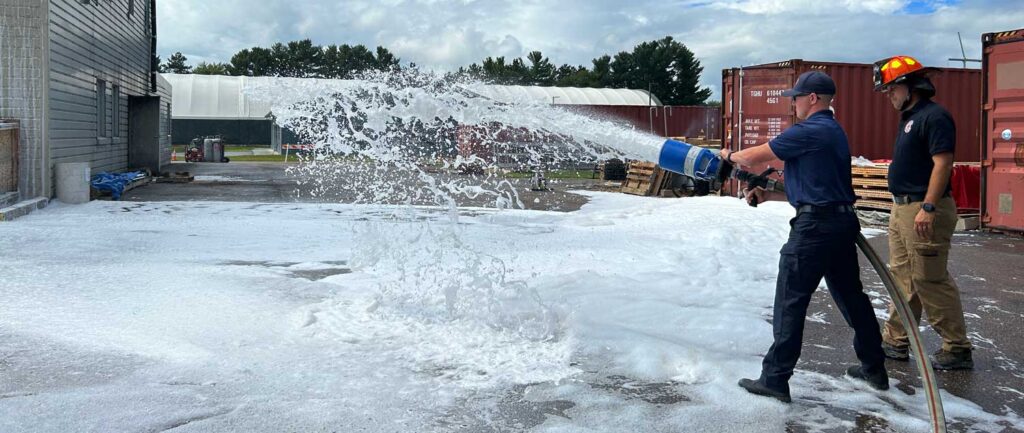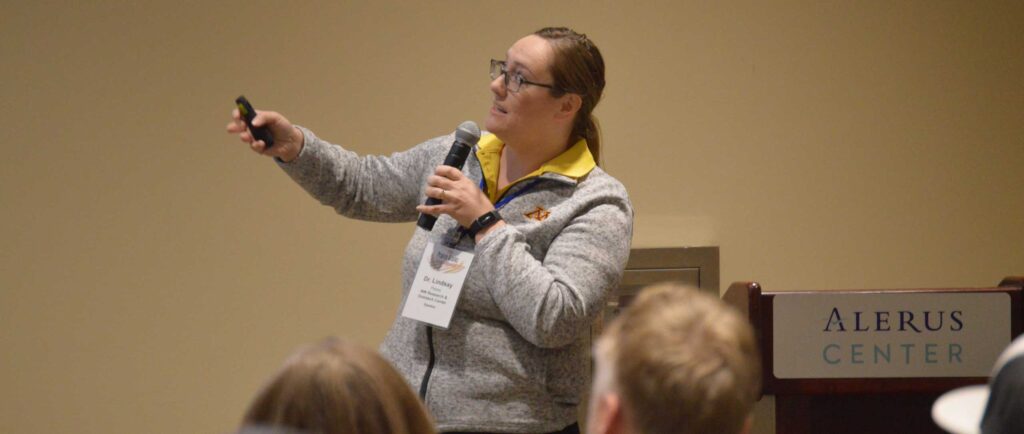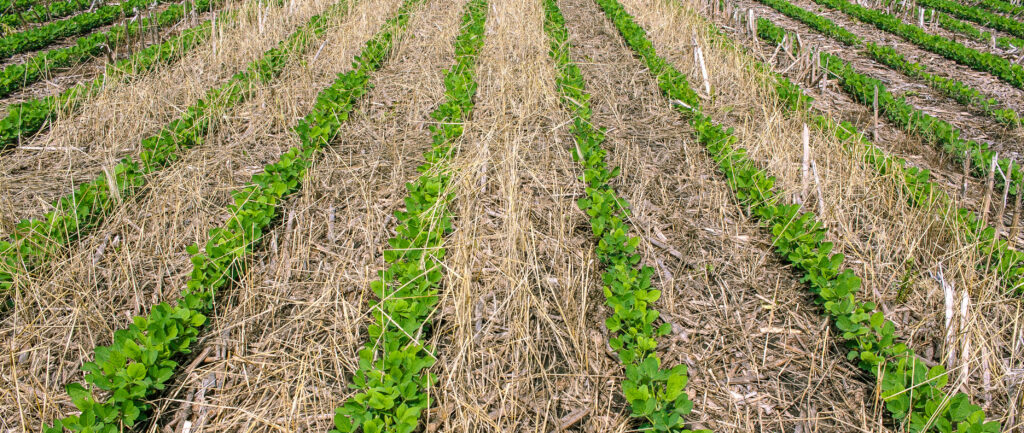The latest and greatest in checkoff-supported soybean research was presented during the annual Best of the Best in Wheat and Soybean Research sessions Feb. 5- 6 in Grand Forks, N.D., and Moorhead, Minn. Featuring sessions on pests and disease, weather and markets and hands on demonstrations, the program was sponsored by North Dakota State University and University of Minnesota Extension in conjunction with the Minnesota Soybean Research & Promotion Council, Minnesota Wheat Research & Promotion Council, Minnesota Association of Wheat Growers, North Dakota Soybean Council, North Dakota Grain Growers and the North Dakota Wheat Commission.
Highlighting the soybean research from University of Minnesota was Entomologist Dr. Robert Koch, who provided an update on the biology and management of soybean gall midge and the tentiform leaf miner, two of the newest soybean pests to the region. Soybean gall midge, which first started appearing in Minnesota in 2020, takes advantage of stem injury and appears to enter the soybean plant through cracks at the base of the plant. Infestation leads to stunting, wilting and death of the soybean plant.
At the moment, managing with chemical control does not appear sufficient, but Dr. Koch and other researchers at the U of M are learning that there are some natural predators, including a beetle and a new species of wasp that will feed on the larvae.
“So not only is soybean gall midge a new species, but so is this wasp that attacks it, and I’m not talking new to Minnesota, I mean new to science,” said Koch. “That was pretty exciting for me as an entomologist to be able to describe a new species, because that usually happens more to someone working in the Amazon rainforest and not in the Midwest doing research on soybeans.”
Koch also shared updates on the tentiform leaf miner, a native species that began appearing on soybeans in the last few years. The tentiform leaf miner is a micro moth that feeds inside the leaves as larvae and form mines, which causes injury and leads to defoliation. Koch did studies to see if the pest may have interest in other forms of legumes, but their latest research indicated they only preferred to lay eggs on soybeans. They also recently conducted studies to see if the tentiform leaf miner preferred to distribute in certain areas of the field.
“What we found is they preferred to set up along field edges with trees versus field edges without trees,” Koch said. “So, this might be something where we can get away with focusing on edge-spraying instead of spraying the whole field.”
Another highlight of soybean checkoff-funded research at the Best of the Best was Dr. Dean Malvick’s report on management of brown stem tot (BSR) and sudden death syndrome (SDS), two soybean diseases that are weather dependent.
Soybean SDS is caused by a soilborne Fusarium fungus that can have significant yield damages in patches within a field. It was first discovered in southern Minnesota in 2002 and has been found as far north as Clay County.
“I suspect it’s further north in the Red River Valley, too, but we just haven’t had any confirmed samples yet,” Malvick said.
Risk factors for SDS include compacted soil, poor drainage, disease history and high levels of soybean cyst nematode (SCN).
“We don’t need SCN to have SDS, but almost every field we test with high levels of SDS we also see high levels of SCN,” added Malvick.
The best way growers can manage SDS is to use resistant varieties and use specific seed treatments.
Malvick also shared information on brown stem rot (BSR). Not unlike SDS, BSR causes discoloration of soybean leaves that usually does not appear until mid-August, but it also causes browning of the pith in the center of the stem, which is white in a healthy plant. It can be managed with crop rotation and host resistance. Malvick notes that current studies are underway to determine fungicide efficacy to reduce BSR and determine the host range of the BSR pathogen.
Not to scare producers of another new disease, Malvick pointed out another new soybean disease very similar to SDS and BSR and becoming a topic of concern in other parts of the Midwest. Red crown rot, first discovered in the Midwest in Illinois in 2018, is now also known in Indiana, Missouri and Kentucky, but not yet known to Minnesota. Because it looks very similar to BSR and SDS, it has sometimes been misdiagnosed.
“The reality is we don’t know how widespread it is because it looks so similar to brown stem rot, sudden death syndrome and some other diseases,” Malvick said. “The roots also develop reddish lesions that look a lot like Rhizoctonia damage.”
While not always present, what sets this disease apart are dark red structures and a maroon coloration of the soybean stem at the soil line.
“It’s a difficult disease to diagnose and it might have been discovered earlier in the Midwest had we been looking for it,” Malvick said. “Now that we’re looking for it, it could be much closer than we know.”
Also at Best of the Best were hands-on demonstrations on Iron Deficiency Chlorosis (IDC) in soybeans with Drs. Ana Carcedo & Jay Goos from NDSU, Root Rot Diseases of soybeans with Dr. Hope Becton of NDSU Extension and Grass Weed Identification with Angie Peltier of University of Minnesota Extension.







